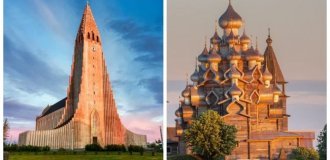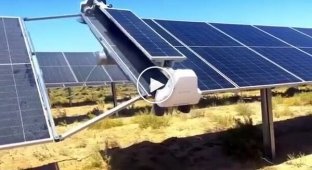Salt lakes: how does life try to exist in the realm of absolute death? (10 photos)
Did you know that about a quarter of the world's lakes are salty? Not only is salt water chemically active, it is also denser, more viscous, and has completely different rules for heat distribution. Therefore, the vast majority of freshwater animals are unable to survive in such lakes, and normal plants die tens of meters from the shore. And yet, there is some unusual life there. 
During the evaporation of water, the branch became a growth point for salt crystals. This happens regularly in salt lakes.
Despite the fact that salt lakes are found on all continents, there are not many reasons for their formation. The saddest ones from the point of view of biodiversity are human ponds for salt evaporation. Due to the evaporation of moisture, the seawater in them gradually turns into brine - a saturated hypersaline solution. There is so much salt in it that its excess falls to the bottom. 
Beautiful, but almost unsuitable for life.
No plants grow along the shores of brine lakes. There are no fish here and never have been. But migratory birds sometimes fly here to their misfortune. They are attracted by the sparkle of open water. They expect to find deep and wide lakes. And only after landing, they learn that the water here is waist-deep for a person. And if the bird does not fly away from here immediately, if it risks taking a sip of water, then death awaits it.
The intestines of animals are designed in such a way that water always moves toward a higher concentration of salts. Since blood is a fairly salty liquid, water from the intestines is easily absorbed into it. But if you drink a hypersalty solution, then it will begin to madly draw water from the blood. Trying to drink such water, birds only increase their thirst and literally dry themselves out from the inside. A few hours on such a lake - and the bird will weaken so much that it will no longer be able to get out without the help of people. 
A girl saves an exhausted swan that sat on an evaporation pond. The outskirts of Baskunchak.
And yet, even here there is life. While the pond is full of water, while the salt concentration is relatively low, a large number of seaweeds develop in it. As the salinity of the lake increases, some types of algae are replaced by others, and after them the color of the lake changes. However, after a while there is so much salt that the algae die, and their place is taken by haloarchaea - microorganisms adapted to life in such harsh conditions. 
Evaporation ponds in the vicinity of San Francisco. Microorganisms actively color the water in the most bizarre colors.
Only one thing in the evaporation ponds remains unchanged: brine shrimp. These small, no more than 4 millimeters, invertebrates easily adapt to water of almost any salinity, so they are found in the vast majority of salt water bodies on the planet. 
Dried brine shrimp are also a popular fish food.
But even they cannot always survive in lakes fed by hot mineralized springs. Such lakes (usually of volcanic origin) are often an alkaline chemical nightmare in which only the most stubborn bacteria can survive. In addition, the chemical composition of the water in them can change dramatically, which from time to time leads to complete sterilization of the lakes. 
Indonesian volcanic lakes constantly change color due to a radical change in chemical composition. There is practically no life in them.
And if the lake is more or less calm, then some life settles in it, from bacteria to the aforementioned brine shrimp. These small animals participate in the formation of highly mineralized silt, which is popularly called "healing mud". 
What is it like to wallow in microorganisms?
The ubiquitous brine shrimp are also found in natural salt water bodies that form from endorheic lakes that have been accumulating salts for centuries. The mineralization of such lakes varies widely - from practically fresh to hypersaline. 
You can swim in such a lake, but you shouldn't drink the water.
Well, the diversity of animals here directly depends on the salt content. If there is little of it, then an almost normal ecosystem is formed in the lake. There are even euryhaline (resistant to changes in salinity) fish: crucian carp, perch, catfish, carp and pike. Green crabs crawl along the bottom. And not only the already known brine shrimp feed on plankton, but also copepods with rotifers. 
Previously, scientists considered rotifers to be worms, but now they have been singled out as a separate group.
As salinity increases, species diversity decreases. First, large fish disappear, and then tenacious small fish like three-spined stickleback or small-finned molly. But marine species appear in the plankton. Their number and diversity directly depend on the distance to the nearest sea. In the salt lakes of Western Siberia, you will hardly find any of them. But in the reservoirs of coastal regions, the number of marine species can reach half of the total biodiversity of the reservoir. 
The three-spined stickleback is almost as cool as brine shrimp. It lives not only in fresh and salt water bodies, but also in the seas!
But if the salt continues to accumulate, then gradually, in terms of their biodiversity, closed lakes approach the reservoirs of the first and second types. But unique species of bacteria are formed there, which are of interest to microbiologists around the world.






















